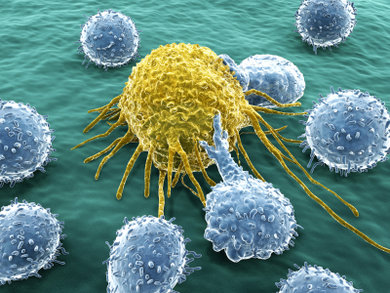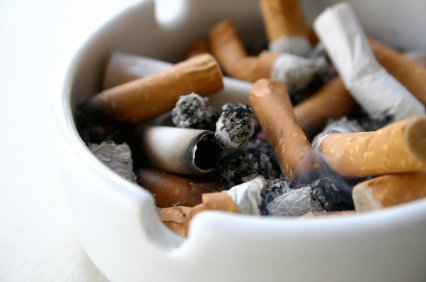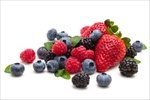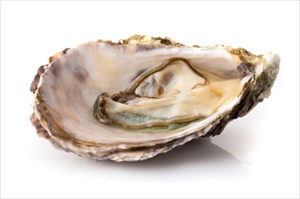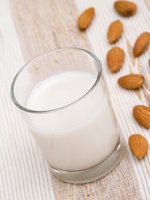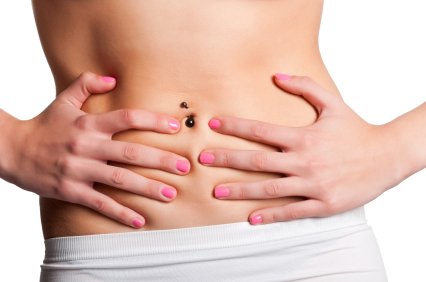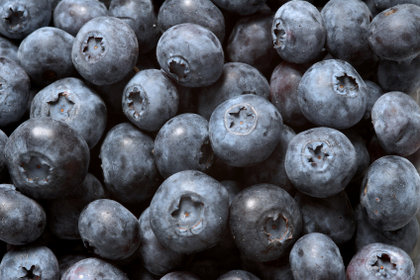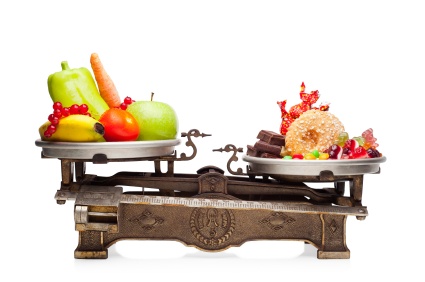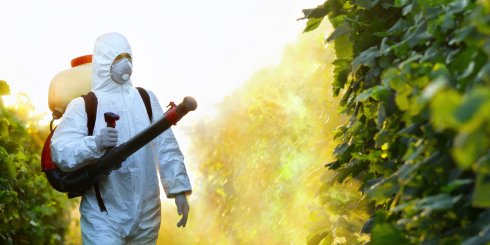Cancer Prevention Diet Basics– Your Nutritional Blueprint for Avoiding Cancer
Cancer Prevention Diet Basics –Five Dietary Strategies to Prevent and Manage Cancer
Because cancer is a disease with many causes, it requires a multi-pronged strategy to prevent and manage.
|
Cancer Fighting |
Cancer Nutrition |
Breast Cancer |
Lung Cancer |
Inflammation |
Antioxidants |
|
Vitamin C |
Zinc |
Calcium |
Vitamin D |
Magnesium |
Constipation |
Below are five dietary tips for cancer prevention:
1. Increase antioxidant and phytochemical intake by eating a plant based whole foods diet.
2. Eliminate or minimize toxins that you consume or to which you are exposed.
3. Balance hormones via the food you eat and by maintaining a healthy weight.
4. Minimize inflammation by eating anti-inflammatory foods and avoiding inflammatory foods.
5. Ensure your detoxification capacity is tip top by consuming adequate fiber and nutrients that promote effective liver and bowel function.
| Cancer Prevention Diet - Wise Words The gastronomic habits you indulge in today, may affect for better or worse the cancer cells you unknowingly carry in your body. From the standpoint of cancer and nutrition, it is wise to make healthy food choices now. Your diet should always be an anti-cancer diet. Press here to read more about cancer and nutrition and what’s involved in a cancer fighting diet. |
Cancer Prevention Diet Strategy #1 – Increase Anti-oxidants by eating a variety of anti-oxidant rich fruits and vegetables including nuts, seeds, herbs and spices.
We are all at risk from the damaging and potentially cancer causing effects of free radicals - unstable oxidants that can damage cells, including DNA, and cause disease including cancer. We confront oxidizing free radicals many times a second.
The most routine functions of living generate oxidizing free radicals including breathing, digesting and exercising. Activities like smoking; heavy alcohol as well as legal and illegal drug intake; tanning; intense exercise; X-ray exposure; illness; and environmental toxins generate free radicals in spades.
| What Causes Cancer? Two things are needed for normal cells to become cancerous: (1) Damage or mutation to DNA; and (2) Some event or substance to trigger cancer cells to grow. |
While possible to reduce free radical accumulation by minimizing or avoiding certain activities or substances, it’s impossible to eliminate them all!
What is the antidote to this onslaught?
….. Consume enough anti-oxidants. Many foods including most fruits and vegetables are abundant in them; supplements can also be a reliable source.
A cancer prevention diet ought to be chockablock with free radical-quenching anti-oxidants.
| Cancer Prevention Diet – How anti-oxidants Quench Free Radicals By supplying the missing electron to the destabilized oxidant, anti-oxidant molecules quench the free radical oxidant and prevent damage to tissue and DNA that can initiate cancer and other disease. |
Some of the key dietary anti-oxidants particularly useful for cancer prevention are foods and supplements containing the following:
- Vitamins A, C, E, D and K
- Alpha-lipoic acid
- Co-enzyme Q 10
- Flavonoids from plants including lycopene, resveratrol and quercetin
- Carotenoids
- Selenium
| Cancer Prevention – Cancers and Free Radicals: Cancers caused or worsened in part by a lack of anti-oxidants include cervical, lung, kidney, bladder, skin, breast and prostate cancers. A cancer prevention diet should minimize free radical production and increase anti-oxidant intake. |
In fact, one of the most effective cancer prevention diet strategies is to consume enough antioxidants to balance the free radicals generated either through your environment, your activities, or through what you eat, breathe or drink.
Luckily, when it comes to a cancer prevention diet, there are many anti-oxidant rich foods.
|
| Cancer Prevention Diet Alert - Caution With Supplemental Anti-oxidants and Chemotherapy -
Once you have an active cancer, some scientists have theorized that supplemental anti-oxidants might protect the cancer and that a selective and time limited concentrated intake of oxidants can be an effective strategy to induce cancer cell death. The theory behind this approach is based on cancer cells containing high concentrations of protective anti-oxidants; strategic intake of oxidants should, therefore, eliminate these anti-oxidant defenses and destroy the now vulnerable cancer cells. Chemotherapy is based on this notion. Speak with your oncologist before taking anti-oxidant supplements during your cancer treatment. Read more in Cancer Fighting Diet. |
Cancer Prevention Diet Strategy #2 – Minimize Intake of Toxins and Oxidants as part of your cancer prevention diet.
Another component of the cancer prevention diet is to avoid or minimize consuming foods or substances containing known or possible carcinogens. While there are many substances in our daily life that are or have the potential for being carcinogenic, some of the most prevalent include the following:
- meats preserved with nitrates including luncheon meats, sausages, hot dogs and bacon. Solution: Find nitrate-free products.
- nuts and grains contaminated with aflatoxin produced by a fungus that infects plants including grains and animals fed contaminated crops. Peanuts and peanut butters are routinely infected. Solution: Buy high quality organic peanut butter from a reliable supplier.
- Charred or grilled meats contain carcinogens similar to
cigarette smoke.
Well done meat can be damaging too. Solution: Discard
burned portions and prepare and eat your meat rare or medium rare. Use
alternative lower heat methods like braising and slow roasting. Slow cookers
provide a low temperature way of preparing meats. Take precautions when grilling meat.
- Fried or over heated carbohydrates like French fries and potato chips may contain the carcinogen acrylamide. Solution: Avoid deep fried potatoes and other vegetables. Eat oven baked potato “fries” or “chips” prepared at lower temperatures.
- Alcohol. While moderate intake of red wine (1 to 2 glasses daily) is associated with a lower incidence of death, including death from cancer, excess alcohol, by contrast, is associated with a higher incidence of health problems including cancer. Women in particular are susceptible to alcohol’s bad effects, thought due to women’s smaller size. Solution: Other than red wine in moderation, avoid alcohol except occasionally and ensure you drink along with a healthy balanced diet. Pregnant women should avoid all alcohol.
- Fish or other foods or substances containing heavy metals including mercury. Ocean going cold water fish, especially tuna, swordfish and mackerel, routinely contain high levels of mercury. Solution: Eat sardines, herring and wild salmon which are relatively uncontaminated but contain good sources of health giving Omega 3 oils. Limit your intake of tuna, swordfish and mackerel to the government guidelines and make sure you buy only molecularly distilled contaminant-free fish oils when supplementing Omega 3 oils. Press here to read more about the how to source healthy oils including healthy fish oils.
- Casein in milk. Lab experiments have shown that the milk protein casein can cause cancer. Countries with some of the highest intakes of dairy have some of the highest prostate and breast cancer rates according to epidemiological studies. Solution: Best to avoid dairy during the active cancer phase. If you choose to eat dairy, do so in moderation and ensure you consume sufficient anti-oxidant and fiber rich fruits and vegetables. Consume hormone free, organic, low fat diary from free range sources if possible, in order to minimize toxins and increase the nutrient value of the dairy products. This kind of diary may have health giving properties absent in most commercial dairy products; it’s just tough to find from my experience. Fermented dairy foods like yogurt and kefir can be health giving, if they contain sufficient enzymes and probiotic bacteria. Read more on the benefits of calcium and how to ensure adequate alternative sources of calcium in your diet to dairy.
- Cigarette Smoke. Smokers compared to non-smokers have higher rates of many cancers including lung, esophageal, larynx, bladder, kidney and liver cancer. Second-hand smoke contains substances as toxic or more than the smoke the smoker inhales. Solution: Don’t smoke yourself and avoid locations where there is smoking. Don’t smoke around children and infants.
As well as the above cancer prevention diet tips, minimize your and your family’s intake or exposure to other carcinogens and toxins including car exhaust, lead paint and household solvents, insecticides, contaminated drinking or swimming water and excess polluted air.
| Unpasteurized Dairy? Pasteurization kills most enzymes so unpasteurized milk may be more nutritious than its pasteurized counterpart, although unpasteurized products carries risk of exposure to pathogens. It follows that you must assess the health and cleanliness of your dairy source, if choosing unpasteurized milk products. |
Press on Real Milk to read about and source healthful non-pasteurized dairy.
Cancer Prevention Diet Strategy #3 Balancing Hormones
Many cancers are considered to have a hormonal component to their genesis and development.
In particular, an overabundance of estrogen relative to other hormones has been linked to the promotion of breast cancer, ovarian cancer and uterine cancer as well as, for that matter, other non-cancerous health conditions. An excess of testosterone is linked to prostate and testicular cancer. Environmental estrogens (xynoestrogens) are associated with DNA mutations that can cause or exacerbate these cancers. A cancer prevention diet ought to balance hormones and reduce the recirculation of old hormones including estrogens.
| Nutrition and Cancer Lexicon – What are phytoestrogens? Phytoestrogens are plant foods with a weak estrogenic effect that can latch onto estrogen receptors and make sure the more powerful estrogens produced in the body don’t get a seat on the bus. The result? - Reduced levels and potency of circulating estrogen. Phytoestrogens also lower blood levels of both estrogen and testosterone, by promoting the liver’s release of SHBG. The most abundant phytoestrogens are soy and its many byproducts including miso, tofu, tempeh, tamari, soy milk and yogurt. Other foods contain phytoestrogens, if lesser amounts, including whole wheat bread; lentils; rye bread; brown rice; bean sprouts; chickpeas; red beans; peanuts; and currants. |
Minimizing the effects of sex hormones is key to some cancer treatments including the drug Tamoxifen, given to breast cancer patients to reduce recurrence.
Hormone Balancing Tips
The strategies for balancing hormones as part of a cancer prevention diet include the following:
(i) Maintaining a healthy weight. Estrogen, especially old estrogens and other hormones, have an affinity for fatty tissue. Body fat, especially that accumulating around the middle (as opposed to the hips and thighs) promotes estrogen production. The more fat a person carries, the more estrogens the person will produce and the greater the possibility that surplus estrogens will be stored in the body and not be excreted. This is thought to be one reason why being overweight or obese is associated with increased risk of breast, prostate and other cancers.
(ii) Eating sufficient fiber to improve detoxification – Consuming an abundance of soluble and insoluble fiber from whole grains, legumes and fruits and vegetables is linked to lower cancer rates. Fiber has a positive effect on hormones via (i) its effect on insulin and blood sugar levels; two hormones that, in excess, can promote inflammation – a known cause of cancer: and (ii) fiber’s ability to remove excess estrogens and other hormones from the digestive tract so that they do not recirculate.
(iii) Consume phytoestrogens to reduce the effects of stronger and possibly more harmful estrogens– Foods that contain phytoestrogens including legumes like soy, garbanzo beans, lentils and other beans can help reduce the effect of more powerful and potentially cancer promoting estrogens. See nearby box for more on phytoestrogens.
The phytoestrogenic effect of soy is thought to be one reason why countries like Japan, with a much higher intake of soy - a long recognized food with phytoestrogen effects –, have much lower incidence of hormone related cancers than other industrialized countries. The protective effect is lost once Japanese move to the West and supposedly consume fewer dietary phytoestrogens. Good sources of soy are tofu, miso, tempeh, tamari and soy milk. Consume other beans and bean products. Examples are hummus made with garbanzo beans and Indian dhal made with lentils.
(iv) Avoid environmental xynoestrogens– One theory to explain the fifty years rise in hormone linked cancers like breast and prostate cancers, is the prevalence in the environment of man-made hormone disrupters, so called xynoestrogens. These artificial estrogens can disrupt healthy hormone function and may increase the risk of hormone sensitive cancers along with other health conditions. Solution: Avoid preparing, storing, freezing or microwaving food or drinks in plastic wrap, plastic bags and storage containers made of BPA plastic. Use wax paper or glass containers instead. The xynoestrogens contained in many of these petroleum based plastic products have been found to leach into food, especially fatty kinds. It follows that meat and cheese are particularly susceptible to this contamination. Press here to read more about widespread endocrine disruptors at Our Stolen Future. Don’t use products containing parabans on your skin. Many sun creams, deodorants and cosmetics contain this preservative. Parabans have been linked to growth of breast cancer cells in the lab. Press here to read the article on the Susan G. Komen web site about the link between breast cancer and parabans.
(v)
Avoid consuming foods with added hormones by
consuming hormone-free meat and dairy products. It
is standard agricultural practice in the US and elsewhere to feed farm animals
hormones to speed growth and increase milk yields. While many of these hormones
are not allowed in Europe, the ban is
circumvented by the import of packaged foods containing these hormones
from the US and elsewhere. While hormone free meat and dairy is available,
beware of processed foods or restaurant fare that may contain dairy or meat
from contaminated animals, especially if you routinely eat on the go. Press here for more on the benefits of organic and hormone free food.
| How phytoestrogens balance hormones. First, the weaker and more benign phytoestrogen latch onto the body’s estrogen receptors in place of the stronger more biologically active estrogens. Second, phytoestrogens promote the liver’s release of sex hormone-binding globulin (SHBG). Together, these decrease circulating hormones that can promote cancer’s growth in sensitive organs like the breast, ovaries, testes and prostate. |
Cancer Prevention Diet Strategy #4 – Improve your body’s digestion and detoxification capacity in order to improve nutrient absorption and detoxification through a healthy liver and digestive system.
Improving digestion should be part of any cancer prevention diet ….
1. Chew your food well. Carbohydrate digestion begins in the mouth where chewing releases digestive enzymes in saliva and triggers other digestive enzymes in the stomach and further down the tract. Foods that is well chewed or masticated (use this word, if you to want to impress others and win at Scrabble), exposes more surface to the digestive juices and enzymes to improve overall digestion and nutrient absorption – key when you’re trying to get the greatest cancer-preventative kick from your diet.
2. Ensure adequate enzymes by eating raw foods daily as well as lactic acid fermented food which helps digestion and nutrient absorption. Heating food destroys many enzymes so ensure you eat some raw fruit and veg daily (it’s called “salad” but go heavy on the veg) and consume on a regular basis foods prepared by lactic acid fermentation like sauerkraut, pickles and kefir. These foods contain health giving enzymes that aid digestion and nutrient absorption, which together are immune enhancing.
3. Take a probiotic supplement or consume probiotic-containing foods like yogurt or kefir. Our intestines are home to billions of bacteria (more than a kilo!) – some good and some bad with balance among the various types being key for health and preventing cancer. Supplemental intake of acidophilus and bifidobacteria can improve digestion by encouraging the growth of good bacteria at the expense of the pathogenic kinds.
4. Take a prebiotic. Prebiotics encourage the growth of healthy bacteria in the gut. While we don’t digest prebiotics, the good bacteria in our guts do. Well-nourished with prebiotics, these bacteria will trigger release of enzymes that neutralize toxins and improve bowel function. High intake of prebiotics is linked with a lower incidence of colon cancer.
| Prebiotics through Food and Supplements – Prebiotic supplements in the form of inulin and oligo fructose are widely available. Oats are rich in the prebiotic beta glucan. Foods high in prebiotics are chicory root, Jerusalem artichoke, onions, leaks, beans, peas, lentil, wheat and oats. Prebiotic levels diminish substantially in food stored long term so aim for fresh foods to boost their prebiotic potential. |
Ensuring good liver detoxification is part of the cancer and nutrition equation….
1. Boost your antioxidant liver enzymes – Enzymes are needed in great numbers for the final stage of liver detoxification. This last detox stage ensures that the toxic byproducts of food and what else you ingest exit the body efficiently and don’t promote disease. Byproducts of metabolism including old hormones, xynoestrogens and other toxins that have no place recirculating in the body.
Most of the nutrients needed to produce these essential liver enzymes are plentiful in the following raw fruits and vegetables and should be included in any cancer prevention diet:
- Cabbage in particular savoy cabbage
- Brussel Sprouts
- Red peppers
- Rosemary and basil
- Onions, shallots and leeks
- Citrus fruits
Supplementing diindolemethane (DIM) also promotes these liver enzymes.
2. Go
organic – By eating organic foods as part of a
cancer prevention diet you can avoid largely the soup of chemical insecticides
and fertilizers applied often repeatedly and at all stages of agricultural
production.
These chemicals can be carcinogenic in their own right or in unison with
other fertilizers and pesticides. This can overwhelm the liver‘s detoxification
capacity. Animals that consume only organic
feed will ensure meat and dairy free from these toxins, as well as antibiotics
and hormones used routinely in conventional livestock production. Together
these substances can add an unnecessary strain on the liver, important to avoid
when preventing or fighting cancer. Press here to read more about the benefits of going organic.
3. Ensure sufficient soluble dietary fiber so that undigested foods don’t hang out in the digestive tract, putrify and be absorbed. The result could be inflammation, allergic and other immune reactions, and DNA mutation. Aim for 35 to 40 grams of fiber per day as part of a cancer prevention diet. Research has shown that the soluble fiber found in fruit and vegetables is more effective at cancer prevention than the insoluble fiber found extensively in whole grains.
4. Support your liver – Your liver is the body’s main detoxification organ. If not in tip top shape, either by being overloaded with toxins including over the counter drugs like NSAIDs and especially acetaminophen (aka paracetamol or Tylenol) or by not being supplied enough liver supportive nutrients, the liver won’t work efficiently. The result may be excess hormones and toxins circulating in the blood stream causing illness or immune weakness that can prime the soil for cancer. Adequate fiber will ensure efficient removal of waste from the digestive tract in order to avoid toxic recirculation through the liver. Routine intake of cruciferous vegetables like broccoli, cauliflower and cabbage is linked to improved liver detoxification and a reduced incidence of colon cancer.
| Cancer Prevention Diet Tips- Consume liver supportive nutrients like the antioxidants Vitamin C, selenium, the flavonoid milk thistle (silymarin) as well as the cruciform vegetables including broccoli, cauliflower and cabbage. |
Press on the below links for related info on a Cancer Prevention Diet and related health and diet issues...
|
Cancer Fighting |
Cancer Nutrition |
Breast Cancer |
Lung Cancer |
Inflammation |
Antioxidants |
|
Vitamin C |
Zinc |
Calcium |
Vitamin D |
Magnesium |
Constipation |
Press here to read more about cancer and nutrition and its role in a cancer prevention diet.
Press here for the nuts and bolts on a cancer fighting diet.
Press here for more about safe ways of grilling meat as part of your cancer prevention diet.
Press here for the cancer preventative benefits of organic food.
Press here to read more about what inflammatory foods you should avoid when you have or seek to prevent cancer; as well as teh nuts and bolts of an anti-inflammatory diet that is cancer protective.
Press here to read more about the benefits of Omega 3 oils including their anti-cancer and immune-enhancing properties.
Press here for the cancer prevention benefits of selenium.
Press here for selenium foods.
Press here to read more about figuring out a food’s anti-oxidant potential using orac values.
Press here to read more about the many benefits of Vitamin C including its anti-cancer benefits and the importance of anti-oxidants generally in your diet.
Press here for timely info on health and nutrition in healthy diet news blog.
Press here to return to Healthy-Diet-Healthy-You home.
